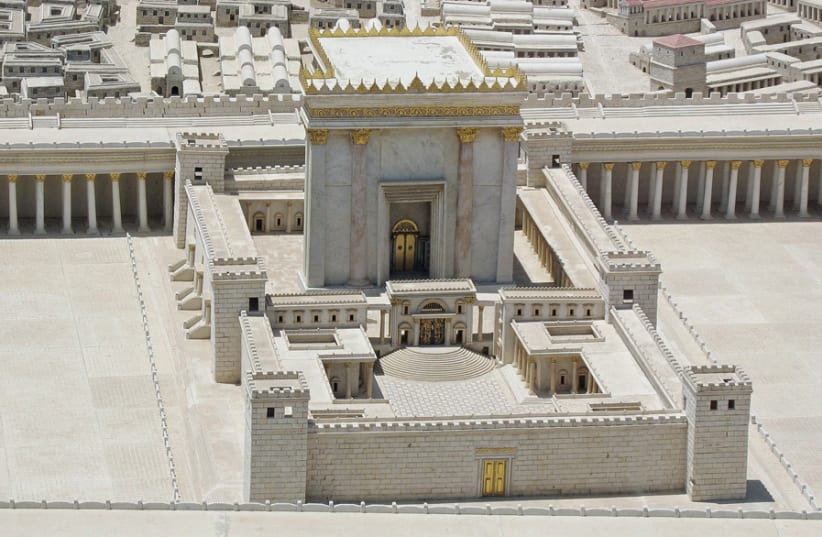This Shabbat, we begin reading from the Book of Leviticus, the book that is termed “the Torah of the kohanim.” This term explains the essence of the book, which deals mainly with laws pertaining to the Temple, the sacrifices and ritual purity and impurity.
In actuality, most of the book deals with issues that have not been relevant for many years. The Temple was destroyed 2,000 years ago. The priesthood has been almost insignificant since the Temple’s destruction, and even laws of purity and impurity are partially inapplicable. This book paints a very different picture from the one we are familiar with, a reality in which the nation is united around the Temple and the sacrifices.
One of the greatest of Jewish sages who lived about 2,000 years ago, during the days of the destruction, was Rabban Yohanan ben Zakkai. He was forced to deal with the new reality of the Temple’s destruction and exile, a reality that raised the question: Could the Jewish nation have a national existence without its spiritual center – the Temple – in Jerusalem? This question was acute during the days when the nation experienced the terrible shock of the destruction and Ben Zakkai had tao respond to it.
Today, we look back on history and know how to answer this question: Yes, the Jewish nation survived. It maintained a strong national awareness and even returned to its land by the grace of God. But 2,000 years ago, this was far from obvious.
This is what we are told in the literature of our sages: “Once, Rabban Yohanan ben Zakkai was leaving Jerusalem, and Rabbi Yehoshua was following him and saw the Temple destroyed. Rabbi Yehoshua said: Woe to us that it [the Temple] is destroyed, a place where the Jewish nation’s sins are atoned! [Ben Zakkai] answered: My son, do not feel bad, we have one atonement like it, and which is that? It is acts of loving-kindness, as it says: ‘For I desire loving-kindness and not sacrifices’ (Hosea 6:6)” (Fathers according to Rabbi Nathan, ch. 4).
Yehoshua looked at the Temple in ruins and was convinced that there was no hope for the nation. Until now, the Temple had atoned for the sins of the nation. Now the nation would disperse into tribes and various factions and disappear from the world. But Ben Zakkai looked ahead and knew that there was one thing that could unite the nation and atone for the sins of separatism and sectarianism: loving-kindness.
Some historians saw this story as evidence of Ben Zakkai’s alleged opposition to the Temple’s ritual worship. They ignored the story that appears in the same source, Fathers according to Rabbi Nathan, adjacent to the previous story:
“...At the same time, Jerusalem was captured, and Rabban Yohanan ben Zakkai was waiting anxiously and fearful. As soon as Rabban Yohanan ben Zakkai heard that Titus had destroyed Jerusalem and burned down the Temple, he tore his clothes, and his students tore their clothing, and they cried and screamed and mourned” (Ibid, ch. 4).
When Ben Zakkai heard about the destruction of the Temple, he tore his clothes, cried and screamed. The pain was unbearable. The grief was deep. The crisis was huge. That is why he stands out in Jewish history as one of the nation’s most significant leaders, the one who succeeded in teaching the nation how to live without the Temple while preserving Jewish identity and national uniqueness.
There can be no replacement for the Temple. That is why we anticipate its rebuilding; we never give up, and we repeat daily:“Restore the service to the Sanctuary of Your abode.” But for the time being, even if it means thousands of years, we persevere and preserve our identity thanks to mutual responsibility for one another, loving-kindness, a sense of community, and unity.
The writer is rabbi of the Western Wall and Holy Sites.
